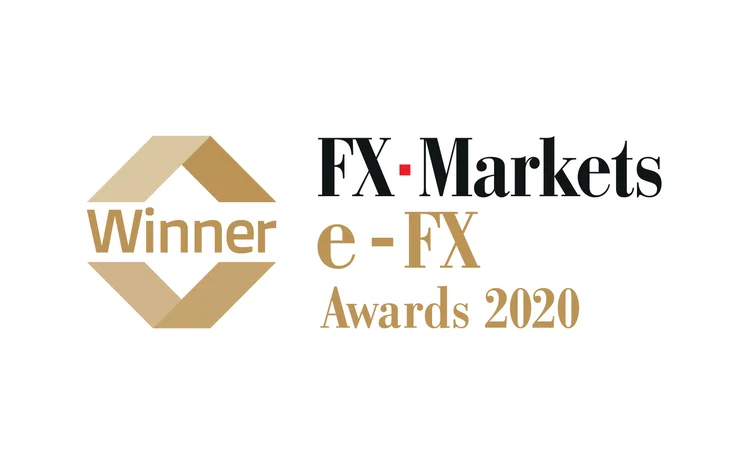
e-FX Awards 2020: Best non-bank algo provider – Tradepoint Systems

With the growing utilitarian nature of algorithms across instruments and functions, many top tier one banks have resorted to building in-house algo solutions. Tradepoint Systems offers an alternative, allowing banks to benefit from external expertise and focus on the comparative advantage of its FX offering

For more than a decade, the largest global banks in the FX marketplace have been assigning resources to developing FX trading algorithms, and have been using their algorithm offerings to attract the attention of customers who had traditionally given business to their favourite regional bank.
This competitive pressure is forcing banks below the top tier to offer algorithms – not to create new revenue streams, but to protect their franchises. However, the vast majority of the computer code required to build, operate and support an FX trading algorithm provides no differentiation, yet is costly and time consuming. All of the differentiation, as substantial as it can be, exists in that tiny sliver of remaining code.
This high cost of entry and relative time-to-market pressure has pushed these lower-tiered banks to partner with technology providers that specialise in designing and developing algorithms, explains Noor Mohammed, director of business development at Tradepoint Systems, which has been named Best non-bank algo provider in the FX Markets eFX Awards for the third time in the past five years.
For this purpose, many of these lower-tiered banks look to Tradepoint as their technology partner, as Tradepoint offers a suite of off-the-shelf, widely used trading algorithms.
Additionally, Tradepoint offers a programmable application programming interface, allowing clients to write their own trading algorithms. Such clients don’t have to worry about, for example, the location of the pip, rounding away from the market or managing the state of an order. They can focus on their 3%, their differentiation, to empower their sales teams.
“Banks are under increasing pressure – especially second-tier and larger tier three banks – to offer algos,” he says. “For them, time-to-market is critical because the pressure from large corporate clients means they need to deliver something rather quickly.”
Some opt to white-label other banks’ algo suites but, for many banks, this remains an uncomfortable proposition.
“This is where we come in,” says Mohammed. “We’re a technology provider, first and foremost. We don’t compete with banks for business and we offer them value and flexibility.”
Expansion of FX algos beyond spot FX
The sell-side market’s appetite for non-deliverable forwards (NDFs) continues on its growth trajectory and shows no signs of slowing. This growth is driven partly by demand from the buy-side community and partly by the hunt for spread capture. As spot FX spreads have narrowed to nearly wafer-thin, NDFs are increasingly seen as one of the few remaining refuges for electronic market-makers. The NDF market has been historically dominated by large tier one banks with established local relationships in Asia and Latin America, yet – in the past year – more volume has moved through a growing pool of tier two and three banks. With the NDF market’s increasing maturity comes further electronification to the point where most liquidity providers (LPs) are expected to stream two-way prices.
Once the preserve of the spot market, algo execution began to spread rapidly into the NDF market in early 2019 when Goldman Sachs and BNP Paribas rolled out their NDF algos. This evolution has created a great opportunity for Tradepoint. In addition to supporting EBS, which has streamed one-month NDFs for some time, Tradepoint now receives streaming standard tenors and broken dates from global banks and FX Spotstream, and are cued to add 24 Exchange, a newly launched anonymous NDF electronic communications network. With this connectivity, Tradepoint’s Spot FX algorithm suite has now been applied in its entirety to streaming NDFs. With LPs showing greater willingness to stream the entire curve, our algorithmic strategies, originally conceived as applicable only to deliverable currency pairs, now fully service the NDF market, utilising much of the advanced capabilities of Tradepoint’s algorithm offering. The propagation of algos doesn’t end there.
“In the last four months, clients have approached us to build request-for-quotes (RFQ) algos for them,” points out Mohammed. “This caught my attention because, until now, all algos were based on streaming prices. But now, clients want to slice up orders and send multiple RFQs to LPs based on time period, liquidity and prices.”
“One reason clients want to do that is that they don’t want to show their hand to one specific LP or hammer the market,” says Mohammed.
“With an RFQ algo they can execute their trade in a controlled way by distributing it across various liquidity providers. These are not limited to spot or NDFs; the latest request was for an RFQ algo for swaps,” he concludes.
Sponsored content
Copyright Infopro Digital Limited. All rights reserved.
As outlined in our terms and conditions, https://www.infopro-digital.com/terms-and-conditions/subscriptions/ (point 2.4), printing is limited to a single copy.
If you would like to purchase additional rights please email info@fx-markets.com
Copyright Infopro Digital Limited. All rights reserved.
You may share this content using our article tools. As outlined in our terms and conditions, https://www.infopro-digital.com/terms-and-conditions/subscriptions/ (clause 2.4), an Authorised User may only make one copy of the materials for their own personal use. You must also comply with the restrictions in clause 2.5.
If you would like to purchase additional rights please email info@fx-markets.com